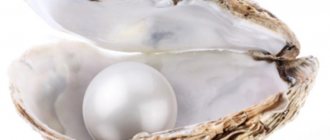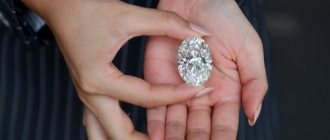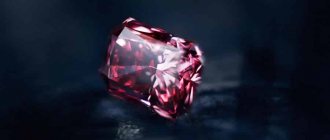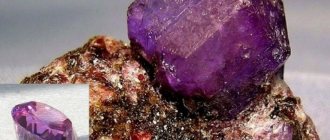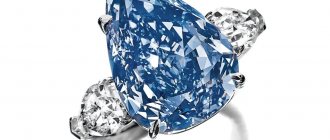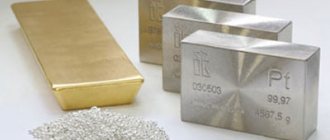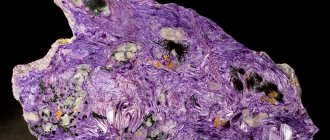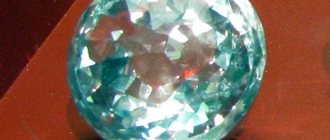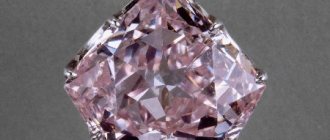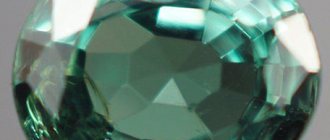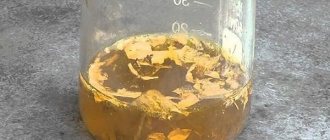Pearl jewelry never goes out of style. And let them say that it is old-fashioned and too traditional, but no one will refuse a gift in the form of a pearl necklace or a pair of earrings. What does the largest pearl in the world look like and how much does it cost? - a question to fill in, the answer to which will be interesting to know for any “why”.
Philippine nugget
Who would have thought that a real treasure in the form of a giant pearl would be hidden under the bed of a humble Filipino fisherman? And most importantly, he was absolutely unaware of the value of his find, which he accidentally discovered and raised from the bottom of the ocean. According to rough estimates, the cost of the pearl is about 100 million dollars. For ten years she lay in “obscurity”, acting as a kind of amulet. Before going out to sea, the fisherman touched it, believing in his luck.
The story would have remained unpublished if His Majesty Chance had not intervened. Due to the move, the young man had to give his talisman to his aunt for temporary storage. The weight of the pearl is almost 34 kg, its width is 67 cm, and its length is 30 cm. By coincidence, a relative worked in the tourism industry and, having seen such a “phenomenon,” persuaded her nephew to show the find to the local authorities. After examining the pearl by experts and recognizing its naturalness, it has every chance of being immortalized in the Guinness Book of Records.
The story of her discovery is surprising and banal at the same time. Going out to sea to fish, the future millionaire caught his anchor on some heavy object. Diving under the water, he saw a large mollusk, in which, after being lifted onto land and opened, the notorious pearl was discovered. It has a non-standard arched shape, resembling convex cartilage, but this fact in no way detracts from its value and natural beauty.
MOST READ:
The list of novels presented below is a list of bestsellers and does not include non-fiction opuses, or books containing religious or political themes.
At what point does a celebrity realize he has made enough money? Realization comes with a $100,000 watch? Maybe buying a private residence with a tennis court and a moat, or the latest Bentley model gives them that security? Obviously this comes at a different time.
While watching a movie, have you ever found yourself thinking, “Wow. Why does this actor seem so familiar? And then, returning home and reading more about this film, they discovered that he was the child of some acting legend?
Anyone who cooks at home knows how important food safety is.
If you don't care about how to properly handle and store your food, you are putting yourself and your loved ones at risk of poisoning. We store some foods in the refrigerator and freeze others. We also fry food to prevent bacterial growth. YOU CAN ORDER ON THE OFFICIAL WEBSITE OF THE STORE
Pearl of Allah
In 1934, an amazing pearl was found near the island of Palawan, located in the waters of the South China Sea. It was impressive not only for its size, but also for its shape, which outwardly resembled the convolutions of the human brain. Until recently, it was considered the largest in the world, receiving the symbolic name “Pearl of Allah”.
Interestingly, the weight of the shell in which the precious “cargo” was matured was 300 kg. The diameter of the find is 23.8 cm, and weighing showed 6.37 kg.
As often happens, a happy occasion is always preceded by some misfortune. This happened with the “biography” of the Pearl of Allah. It was discovered by a young fisherman who, through negligence, accidentally put his hand into the opened shell of a giant tridacna. The mollusk slammed the doors shut, and the hand remained hostage to the trap. It was not possible to save the guy, and when his body was raised to the surface and the shell was opened, a real miracle was revealed to the eyes of the fishermen. The pearl received its unusual name because of its resemblance to a human head dressed in a block of wood.
In addition to the real story, there is also a beautiful legend associated with the ancient Chinese philosopher Lao Tzu. It tells that the thinker carved three faces from stone: his own, Buddha’s and Confucius’s. The “models” were then placed in individual pearl shells and covered with natural mother-of-pearl over the course of several years. Once the pearls reached a certain size, they were transplanted into other shells, passed on from generation to generation. During the next transportation to a new place, one of them was lost during a storm near the Philippine Islands. It was precisely this that the young fisherman found after giving up his life. According to this legend, the jewel received a second name - the Pearl of Lao Tzu.
But no matter how poetic the legend may sound, scientists have smashed it to smithereens, claiming that the real age of the pearl is no more than 600 years. While the events described by the philosopher, and the life of Lao Tzu himself, date back to 400 BC. The estimated value of the treasure is about 400 million dollars. Its current owner is Victor Barbish, who bought the treasure from American jeweler Peter Hoffman several decades ago.
There are rumors that in the 90s Bin Laden himself wanted to purchase it for his collection, offering $60 million as a ransom. The relic is kept in one of the US banks, whose name is not disclosed for security reasons. All that is known is that the owner of the pearl is going to bequeath it to some famous museum. Then everyone will be able to see with their own eyes what beauty nature can create.
Five-strand pearl necklace: $1.7 million
The five-strand necklace was sold in 2012 at Christie's. The inner thread consists of 63 pearls, the next two - from 68 and 72 natural pearls. The fourth and fifth row consist of 73 pearls. The diameter ranges from 4.1 mm to 11.35 mm. from all the others is the blue-yellow thread that connects all the pearls.
Types of pearls
There are two main types of pearls - sea and freshwater. Since sea water is richer in its chemical composition than river water, the pearlescent secretion formed around the pearl “base” looks much brighter and richer. Pearls have not been mined naturally for almost half a century - this is prohibited by international law. To grow shells, special farms located in tropical seas are used.
It is possible to distinguish between sea and river “material” with an unprofessional eye. It is enough to carefully examine the shape, color and level of brilliance of the pearl.
- It is almost impossible to grow a perfectly round pearl. However, sea pearls are as close to ideal as possible, but river pearls, on the contrary, have more elongated roundness, reminiscent of an egg or an oval. The relief of the outer shell also differs. In freshwater pearls, as a rule, it is uneven, covered with tubercles and dents, while in sea pearls it is even and smooth.
- What distinguishes freshwater pearls from sea pearls is their shine. The first one looks dull in the light and has a matte tint, while the second one shines and shimmers in the sun, “showing off” its mother-of-pearl. This effect is achieved due to the special composition of sea water, containing a high percentage of salt. During maturation, the pearl is polished in an alkaline environment, resulting in a characteristic pearlescent luster.
- Freshwater pearls are smaller in size than sea pearls, averaging 6-8 mm in diameter. The ripening period also passes faster - about 2 years, and accordingly the price per gram is set lower.
- You can distinguish sea and freshwater pearls by their color. The first one does not shine with transitional shades, but you can find black and hot pink “models”. The second has a much richer range of colors - light cream and brown to olive and lilac-lilac. The coloring of freshwater pearls often has a fragmented appearance, while sea pearls are evenly colored and have no color flaws.
- The longevity of the “inhabitants” of seas and rivers also varies. Everything here is like with people. Freshwater pearls that are more hardened in cold water have increased wear resistance and do not lose their appearance for many years. But marine aristocrats, raised in the warm tropics, are very vulnerable to external conditions and can quickly lose their luster under intensive use. If the beads inherited shine, as they did many years ago, having begun their “story” on my grandmother’s neck, then this is guaranteed to be river material.
Physical and chemical properties
Pearls consist of nacre, which is an aggregate of the organic horny substance conchiolin and calcium carbonate (usually in the form of the mineral aragonite). The stone is not very hard and quite brittle. May be in different colors. Its brilliance and play of colors are explained by the wavy surface of mother-of-pearl. It is not a mineral, but is classified as a precious stone.
| Formula | Conchiolin and aragonite |
| Color | Various, often white, milky and silver, less often cream, pink, blue, gold, green, dark gray, light blue, black. |
| Shine | Pearl |
| Hardness | 3-4 |
| Transparency | Often opaque, less often slightly translucent |
| Strength | Fragile |
| Kink | Shellish |
| Cleavage | Absent |
| Density | 2.60-2.78 g/cm3 |
| Refractive index | For light varieties - 1.520-1.660, for dark and black varieties - 1.530-1.690 |
Interesting facts about pearls
They say that Queen Cleopatra once argued with Mark Antony, promising to make the most expensive cocktail from ordinary wine. She dissolved a large pear-shaped pearl in a glass and drank it in one gulp in front of the amazed admirer. The dispute was won.
Here are some more interesting facts related to pearls:
- In total, there are 8 pearl configurations: oval, pear, button, semicircle, drop, circle, sphere and arbitrary irregular shape.
- Marie de Medici, Queen of France, was very fond of wearing pearls and had one special dress in her wardrobe. It was all embroidered with jewelry, of which there were about 30 thousand pieces.
- On the territory of ancient Rus' there were more than 50 rivers where pearl fishing was carried out. It was mainly concentrated in the northwestern part of the country.
- It is a rare occurrence when there are two pearls in a shell at once. An example of natural “magic” was the discovery of nine pearls at once, fused with each other in a cross shape and called the “Great Southern Cross”.
- Coco Chanel elevated pearls to the rank of classic jewelry. With her light hand, he came into fashion, becoming certainly associated with the little black dress. As the great fashion designer said, pearls are always right.
Medicinal properties
Pearls are not deprived of healing power. He is capable of:
- Calm and have a general beneficial effect on the nervous system.
- Restore memory and improve concentration.
- Cure diseases and restore liver and kidney functions.
- Normalize blood pressure - raise it at low values, lower it at high values.
- Calm even severe headaches.
- Solve age-related and other skin problems - cleanse, nourish, rejuvenate, improve color, for which “pearl essence” (pearl powder) is used.
- Strengthen hair and nails.
- Improve a person’s overall well-being by relieving fatigue and feeding him energy.
The most famous pearls in the world and interesting stories associated with them
There are many jewels in the world that have names like people. Usually their trail stretches through history across centuries and countries. People collect jewelry, and stones are “collected” by their owners. Some boast a very decent selection of historical celebrities. This collection contains a story about the largest and most famous pearls in the world.
Pellegrina (Pelegrina)
This pearl is considered one of the most mysterious in history; its location is unknown today. The unique jewel has always been called the “sister” of another famous pearl – “Peregrine”. Due to the similarity of names and shape (both are almost perfect pear-shaped), they are still often confused. Pellegrina was a real “pearl” of the Yusupov family collection. It is known that at one time it belonged to the Spanish king Philip IV, who in the 17th century gave it to his daughter Maria Teresa. There is a legend that Grigory Rasputin once asked Prince Felix about his two incomparable pearls - his wife Irina and Pellegrina, and that, allegedly, it was under this pretext that he was invited to the Yusupov palace. Princess Zinaida Yusupova and the Pellegrin family pearl in the portrait of François Flameng and in photographs Most likely, after the revolution, the Yusupovs managed to take this jewel abroad, and in 1953 the pearl was sold by Prince Felix to the Genevan jeweler Jean Lombard. Felix and Irina Yusupov in Paris, photo from the 1960s
Peregrina ("The Wandering Pearl" or "The Wanderer")
“The Wanderer,” the older sister of Yusupov’s “Pelegrina,” can, without a doubt, be considered the most famous historical pearl. It was found in the 16th century off the coast of Panama. According to legend, a slave who was so lucky was rewarded with freedom. The first owner of the rarity was King Philip II of Spain. Then the pearl changed its kings and queens several times: Mary Tudor, Margaret of Austria, Napoleon's brother Joseph Bonaparte and Napoleon III, the Hamilton spouses... There is a known story that the latter lost the jewel twice - at a ball in Buckingham Palace and on the sofa of Windsor Castle. This is explained by the fact that the pearl was too heavy and simply fell out of all the settings. Portrait of Mary Tudor with the pearl “Peregrina” Then both times and queens changed - in the 20th century, Elizabeth Taylor owned the pearl. By the way, she also lost a piece of jewelry once in a room at the Caesars Palace Hotel. A historical pearl was found in the mouth of her beloved puppy. After this, the film star decided not to take risks. Together with the jewelry house Cartier, Elizabeth herself came up with the design of a unique pearl and diamond necklace, the main decoration of which is La Peregrina. After the actress's death in 2011, this beauty was auctioned for $11.8 million. Elizabeth Taylor and the famous Peregrina pearl necklace
Pearl of Gogibus
A unique pearl, not quite regular pear-shaped, but very large - its weight is about 130 carats. It received its name in honor of the brave merchant Francois Goguibus, who acquired it on the islands of the West Indies and brought it to Spain in 1620. According to legend, the merchant invested his entire fortune in the jewel and offered to buy it to the Spanish King Philip IV. When the monarch asked the traveler how he was not afraid to spend all his savings on one single stone, he replied: “Because I knew that there was a king of Spain to buy it from me.” Philip had no choice but to pay for the curiosity and insert it into his crown. Pearl of Gogibus This jewel was considered the largest pearl in Europe until it disappeared in the 18th century. However, in 2010, it unexpectedly appeared at an online auction and was sold for $3 million.
Pearl of Allah (Pearl of Lao Tzu)
This unique creation of nature was found relatively recently - in 1934, but it has managed to acquire legends no worse than most historical treasures. If you collect everything that has been invented about it, it turns out that this is exactly the pearl that the famous founder of Taoism, Lao Tzu, tried to grow a couple of thousand years ago. He allegedly placed a jade amulet with the image of three faces inside the pearl shell: Confucius, Buddha and his own, in order to obtain a unique pearl, and bequeathed to his students to monitor this process. They carried the pearl as it grew into larger and larger shells, but then the jewel was lost at sea during a storm. True, scientists who have studied the rarity do not confirm this version, since, according to them, this pearl is no more than 600 years old. The Pearl of Allah got its name because of its resemblance to the head of a man in a turban. The next round of legends is associated with our time. A huge pearl was found near the Philippines, and allegedly cost the life of a young diver. The giant tridacna clam slammed shut, pinching his hand. When local residents discovered the body and pulled out a huge shell from the sea, they found a pearl weighing almost 6.5 kilograms inside. A mullah from a local mosque saw in its intricate, irregular shape the head of a man in a turban and called it “the Pearl of Allah.” Despite the fact that the pearl does not have the usual mother-of-pearl luster, its value today is estimated at $40 million. The exact location of this treasure is unknown, there is only information that it is located in New York.
New record holder
The largest pearl in the world But a 6-kilogram “tear of the sea” is not the limit. A few years ago, The Daily Mail reported that a pearl weighing 34 kg was found there in the Philippines! The dimensions of the new record holder are 67 cm in length and 30 cm in width. This miracle of nature was allegedly caught by a fisherman about 10 years ago. This man, probably not at all inclined to money-grubbing, simply kept her at home as a talisman. Other people saw her only during a fire in the lucky man's house. The jewelry was left in the city, where it is available for inspection while the examination is carried out. Its cost could be $100 million. The weight of the new record holder among pearls is 34 kilograms
The Pearl of Puerto.
The Pearl of Puerto is the largest natural pearl in the world. It was found in a giant clam by a local fisherman in the Philippines.
For many years, pearls were kept in the house of a fisherman, who considered them his talisman. The world learned of its existence through a relative of a fisherman who received the pearl when the fisherman died.
The Pearl of Puerto is 2.2 feet long and 1 foot wide. She weighs an incredible 34 kg. The Pearl of Puerto is currently on display at the City Hall of Puerto Princesa.
Satlada
In the world, Satlada is usually called the seven-string pearl necklace. One of the most famous Satlad necklaces belonged to the Nizam rulers of the Indian state of Hyderabad. The necklace, made in Basra, features 465 pearls embedded in the necklace.
